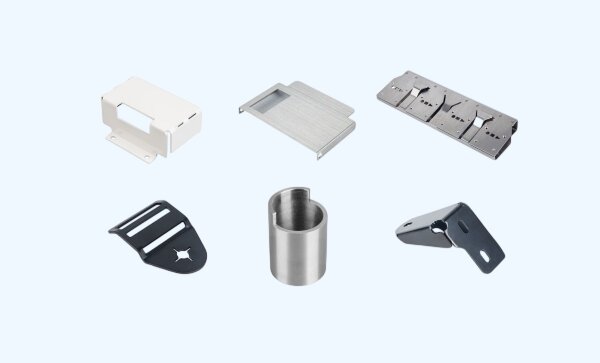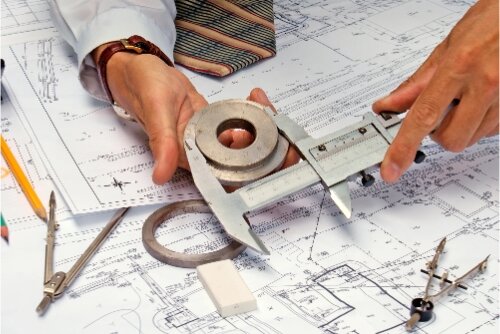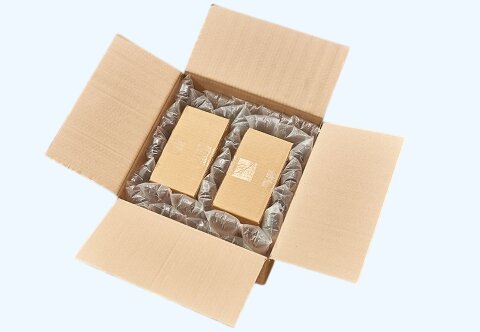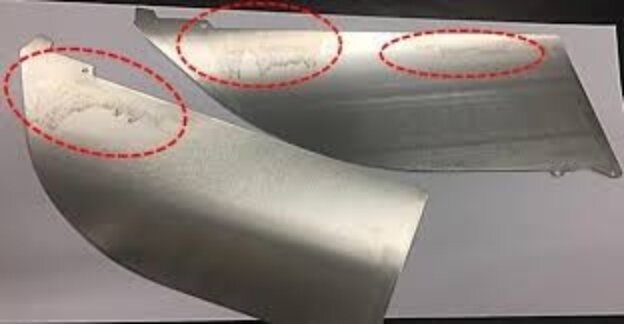Atualmente, muitas indústrias dependem de peças metálicas que estão a tornar-se cada vez maiores, mais detalhadas e precisas. Os métodos de corte tradicionais têm muitas vezes dificuldade em acompanhar o ritmo, especialmente quando se trabalha com chapas de grandes dimensões ou quando a precisão é crucial em grandes áreas.
É aqui que o corte a laser em grande escala faz a diferença. Proporciona uma forma rápida, precisa e eficiente de cortar grandes chapas de metal, mantendo uma elevada precisão e uma qualidade de superfície suave. Os engenheiros, projectistas e fabricantes podem utilizar este processo para criar estruturas mais fortes, obter acabamentos mais limpos e reduzir os custos de produção.
Este artigo explora a tecnologia e os materiais utilizados no corte a laser de chapa metálica em grande escala. Ficará também a saber como este método ajuda as empresas a poupar tempo e dinheiro, melhorando simultaneamente a qualidade dos produtos.
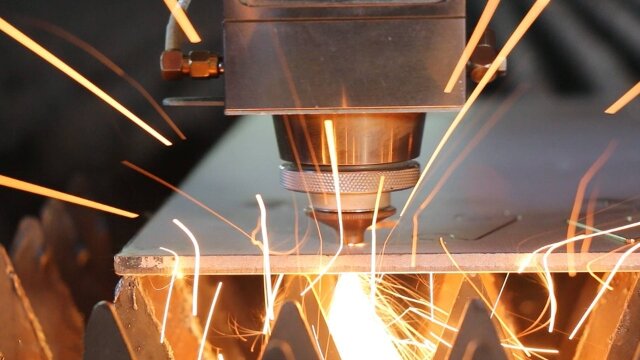
O que é o corte a laser de grande formato?
O corte a laser de grande formato utiliza máquinas especificamente concebidas para processar chapas metálicas de grandes dimensões. A maioria dos modelos pode processar chapas com dimensões até 3000 mm × 1500 mm, enquanto os modelos avançados podem atingir dimensões de 6000 mm × 2500 mm ou superiores. Estes sistemas utilizam lasers de alta potência, normalmente entre 6kW e 20kW, para cortar materiais espessos como o aço inoxidável, o aço-carbono e o alumínio.
Esta grande área de trabalho permite aos fabricantes produzir peças significativas numa única operação. Reduz o tempo de preparação, minimiza os erros de alinhamento e assegura dimensões exactas. Devido a estas vantagens, o corte a laser de grande formato é amplamente utilizado em indústrias que produzem peças pesadas, incluindo construção, transporte e fabrico de equipamento de energia.
Materiais adequados para corte a laser em grande escala
As máquinas de corte a laser em grande escala podem processar uma vasta gama de metais. Cada metal reage de forma diferente ao raio laser, pelo que a utilização das definições e da potência corretas é crucial para obter resultados limpos e precisos.
Metais comuns utilizados
Aço inoxidável é uma das escolhas mais comuns. Corta suavemente e deixa as arestas limpas e sem óxido, principalmente quando o azoto é utilizado como gás de assistência.
Alumínio é leve mas refletor. Requer uma potência mais elevada e um controlo preciso para evitar arestas ou marcas de queimadura.
Aço carbono é mais fácil de cortar porque absorve a energia do laser de forma eficiente. O oxigénio é frequentemente utilizado como gás de assistência para aumentar a velocidade de corte, embora possa deixar arestas ligeiramente oxidadas.
Cobre e latão são mais difíceis porque reflectem a luz e conduzem o calor rapidamente. Alta potência lasers de fibra tratam estes materiais melhor do que os mais antigos Sistemas laser de CO₂.
Intervalos de espessura e limites de material
A espessura de corte depende tanto da potência do laser como do tipo de metal que está a ser cortado. Um laser de fibra de 6kW a 12kW pode normalmente cortar:
- Até 25 mm para aço inoxidável
- Em redor 20mm para alumínio
- Até 40 mm para aço-carbono
Uma definição de potência mais elevada melhora a velocidade de corte e a qualidade do gume. No entanto, materiais mais espessos aumentam o risco de distorção por calor. Um bom arrefecimento e controlo do gás ajudam a manter a precisão e a evitar danos na superfície.
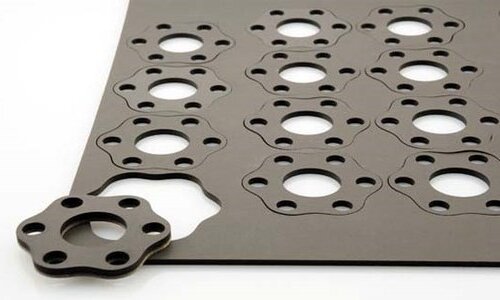
Equipamento e tecnologia por detrás do corte a laser de grandes formatos
O corte a laser de grande formato combina lasers de fibra de alta potência, sistemas mecânicos precisos e software inteligente. Estas tecnologias trabalham em conjunto para processar chapas metálicas de grandes dimensões com rapidez e precisão.
Lasers de fibra de alta potência e conceção de máquinas
Os lasers de fibra modernos focam feixes de luz intensos para derreter ou vaporizar metal ao longo de um caminho programado. Os modelos de alta potência - normalmente 10 kW ou mais - podem cortar chapas grossas de aço ou alumínio, mantendo as arestas afiadas e limpas.
A estrutura da máquina é construída para garantir estabilidade e precisão. Pórticos robustos, motores lineares e sistemas de acionamento duplo permitem um movimento suave e controlado em grandes áreas de trabalho. Os controlos ópticos avançados mantêm o foco do laser estável, mesmo quando se cortam peças com vários metros de comprimento.
Estas caraterísticas garantem velocidade e precisão, permitindo a produção contínua de peças grandes com o mínimo de erros ou correcções manuais.
Software de automatização e aninhamento
A automatização é fundamental para melhorar a eficiência. Os sistemas automatizados de carga e descarga movimentam chapas pesadas sem elevação manual, reduzindo o tempo de inatividade e a fadiga do operador. Isto é especialmente valioso no manuseamento de materiais espessos ou de grandes dimensões.
O software de agrupamento acrescenta outro nível de eficiência. Organiza as peças na folha para minimizar o desperdício de material e tirar o melhor partido de cada folha. O software calcula a disposição mais eficiente em segundos, ajudando a reduzir os custos de material e a aumentar a produtividade.
Em conjunto, a automação e o software inteligente fazem do corte a laser de grande formato uma solução rápida, precisa e económica para o fabrico de grandes volumes.
Precisão, tolerâncias e qualidade da superfície
O corte a laser em grande escala é valorizado pela sua precisão e acabamento superficial limpo. Mesmo quando se trabalha com chapas de grandes dimensões, as máquinas modernas conseguem manter tolerâncias apertadas e arestas suaves que cumprem normas industriais rigorosas.
Níveis de precisão alcançáveis
As máquinas de corte a laser de fibra avançadas podem atingir tolerâncias tão apertadas como ±0,1 mm, dependendo da espessura do metal e do tamanho da folha. A precisão é influenciada por factores como a planicidade do material, a calibração da máquina e a estabilidade da potência do laser.
Se a folha for irregular ou ligeiramente deformada, o foco do laser pode deslocar-se, o que pode afetar a qualidade dos bordos. Para resolver este problema, muitas máquinas utilizam sistemas automáticos de controlo de altura que ajustam a posição do laser em tempo real para manter a distância correta da superfície.
As fixações estáveis e os sistemas de controlo de movimentos precisos também desempenham um papel essencial. Mantêm a estabilidade do alinhamento durante o corte, assegurando dimensões consistentes em peças de grandes dimensões e em séries de produção alargadas.
Requisitos de suavidade do bordo e de acabamento
O corte a laser cria arestas limpas com poucas ou nenhumas rebarbas. O feixe de laser focalizado derrete o metal e ajuda a remover o material fundido, deixando uma aresta afiada e lisa.
Na maioria dos casos, as peças estão prontas para soldadura, Revestimento, ou conjunto sem necessitar de passos adicionais de acabamento, tais como retificação ou rebarbação. Quando o nitrogénio é utilizado como gás auxiliar, produz arestas brilhantes e sem óxido em aço inoxidável e alumínio, reduzindo a necessidade de tratamento de superfície.
Este nível de acabamento poupa tempo, reduz os custos de processamento e melhora o aspeto geral e o ajuste do produto final.
Vantagens do corte a laser em grande escala para as empresas
O corte a laser em grande escala oferece mais do que apenas a capacidade de lidar com chapas grandes. Ajuda as empresas a reduzir os custos, a acelerar a produção e a conceber mais livremente sem os limites dos métodos de fabrico tradicionais.
Eficiência de custos e tempo
O processamento de folhas grandes numa única configuração reduz a necessidade de manuseamento, alinhamento e trabalho de montagem. Menos costuras significam menos soldadura, retificação e inspeção. Isto poupa tempo e custos de mão de obra.
O corte a alta velocidade também melhora o tempo de execução, permitindo que as peças passem rapidamente do projeto para a entrega. Uma produção mais rápida aumenta o retorno do investimento (ROI) e ajuda as empresas a responder rapidamente às alterações do mercado ou às exigências dos clientes.
Flexibilidade e escalabilidade da conceção
Os engenheiros podem conceber peças maiores ou mais complexas sem terem de as dividir em secções mais pequenas. O corte em grande formato elimina a necessidade de peças de ligação que podem aumentar o peso e reduzir a resistência.
Estes sistemas são também escaláveis, suportando tudo, desde pequenas séries de protótipos até à produção em grande escala. Esta flexibilidade permite às empresas desenvolver novos produtos mais rapidamente, mantendo uma qualidade consistente em todos os lotes.
Qualidade excecional dos bordos
Os lasers de fibra em grande escala produzem arestas nítidas e limpas com o mínimo de rebarbas. A pequena zona afetada pelo calor impede a deformação e a descoloração, mantendo as peças dimensionalmente precisas.
Os rebordos lisos e de alta qualidade melhoram o ajuste da montagem e o aspeto geral. Este nível de precisão é crucial para as indústrias que exigem tolerâncias precisas e acabamentos refinados, como a eletrónica, a aeroespacial e o fabrico de equipamento médico.
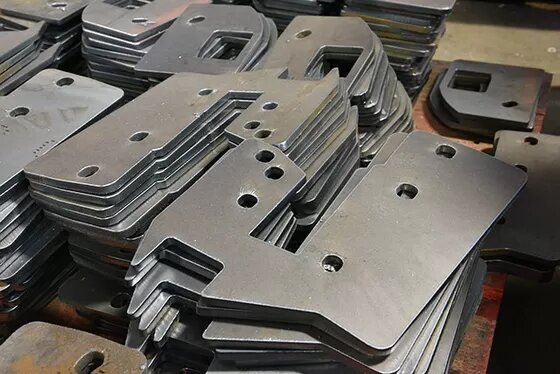
Capacidades de corte a laser em grande escala da Shengen
Na Shengen, combinamos tecnologia laser avançada com engenharia especializada para fornecer serviços de corte precisos e eficientes em grande escala. A nossa configuração de produção suporta uma vasta gama de necessidades industriais, desde protótipos simples até ao fabrico em grande escala.
Capacidade do equipamento e gama de materiais
Nossas máquinas de corte a laser possuem áreas de corte de até 3000mm × 1500mm, facilitando o processamento de grandes chapas de metal com precisão. Com lasers de fibra que variam de 6kW a 12kW, podemos cortar vários metais, incluindo aço inoxidável, aço carbono, alumínio, cobre e latão.
Estes sistemas oferecem um desempenho estável mesmo em materiais mais espessos - até 40 mm para aço carbono, 25 mm para aço inoxidável e 20 mm para alumínio. O equipamento automatizado de carga e descarga mantém o fluxo de trabalho suave e minimiza o tempo de manuseamento manual.
Exemplos de casos e experiências de projectos
Apoiámos muitos projectos que requerem peças metálicas grandes ou complexas. Alguns exemplos incluem estruturas de maquinaria industrial, grandes armários de controlo e painéis estruturais para aplicações de energia e equipamento pesado.
A nossa experiência em corte a laser de grande formato permite-nos cumprir tolerâncias dimensionais apertadas e requisitos de acabamento de superfície. Cada projeto é gerido por uma equipa de engenharia experiente que optimiza as disposições e os parâmetros de corte para alcançar o melhor equilíbrio entre velocidade, precisão e eficiência de custos.
Escolher o parceiro certo para o corte a laser
A seleção do parceiro certo para o corte a laser em grande escala pode ter um impacto significativo no sucesso do seu projeto. Os engenheiros e compradores devem olhar para além do custo e concentrar-se na capacidade, precisão e fiabilidade.
Factores-chave a avaliar
Comece por verificar a capacidade do equipamento. Certifique-se de que o fornecedor consegue processar o tamanho de folha pretendido sem cortar ou unir secções mais pequenas. Confirme a gama de potência do laser para garantir que podem processar os materiais e as espessuras necessárias para o seu projeto.
Em seguida, analise a sua capacidade de tolerância. Um parceiro fiável deve manter tolerâncias apertadas mesmo em peças importantes. Verifique a gama de materiais - desde aço inoxidável e aço carbono a alumínio e cobre - para ter a certeza de que podem suportar todas as suas necessidades de design.
Além disso, considere os prazos de entrega e o fluxo de trabalho de produção. Uma loja equipada com automação e software de colocação inovador pode reduzir significativamente os tempos de execução, garantindo que o seu projeto decorre sem problemas.
Porque é que Shengen é uma escolha de confiança?
Com mais de uma década de experiência no fabrico de chapas metálicas e corte a laser, a equipa da Shengen é especializada na gestão de projectos complexos de grande formato, desde o protótipo até à produção.
Utilizamos máquinas avançadas de laser de fibra que proporcionam cortes precisos e limpos numa vasta gama de metais. Combinados com sistemas automatizados e um rigoroso controlo de qualidade, garantimos resultados consistentes em todos os lotes.
Se estiver a trabalhar num projeto que envolva peças metálicas de grandes dimensões ou componentes sobredimensionados, a nossa equipa de engenharia está pronta a ajudar. Partilhe os seus desenhos, detalhes de materiais e requisitos técnicose forneceremos um orçamento detalhado e um plano de processo adaptado às suas necessidades.
Olá, chamo-me Kevin Lee

Nos últimos 10 anos, tenho estado imerso em várias formas de fabrico de chapas metálicas, partilhando aqui ideias interessantes a partir das minhas experiências em diversas oficinas.
Entrar em contacto

Kevin Lee
Tenho mais de dez anos de experiência profissional no fabrico de chapas metálicas, especializando-me em corte a laser, dobragem, soldadura e técnicas de tratamento de superfícies. Como Diretor Técnico da Shengen, estou empenhado em resolver desafios complexos de fabrico e em promover a inovação e a qualidade em cada projeto.

